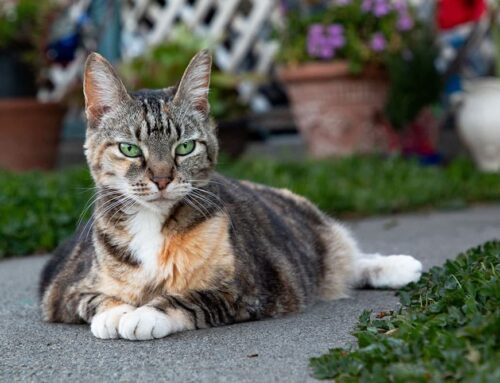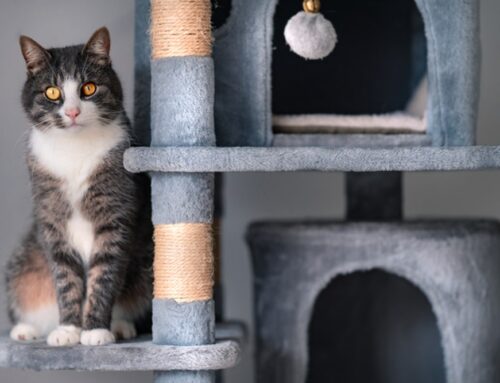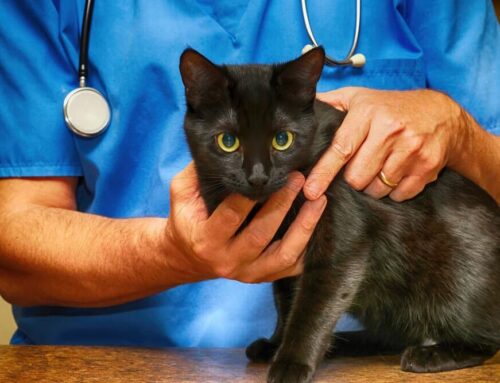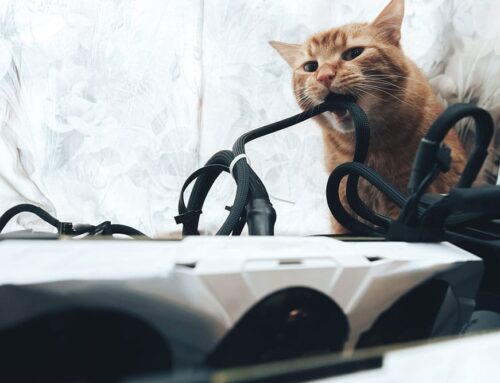End-of-life care for your senior cat can be difficult, and you must consider several aspects to determine if they are still living a fulfilling life. Our Just Cats Clinic team wants to help with this information about assessing your cat’s quality of life (QOL) and ensuring you are making the best decision for your feline family member.
Conditions that can affect your cat’s quality of life
As your cat ages, they are at higher risk for conditions that can negatively affect their QOL, including:
- Chronic kidney disease (CKD) — Your cat’s kidneys play an important role in filtering waste products from their body, and when aging damages the kidneys, these products accumulate in your cat’s bloodstream. Signs include weight loss, increased thirst and urination, decreased appetite, and vomiting.
- Heart disease — Heart disease is a common problem for senior cats that affects their heart’s ability to pump blood effectively through the body, resulting in congestive heart failure (CHF). Signs include lethargy, weight loss, decreased appetite, respiratory distress, and sudden collapse.
- Arthritis — Studies have shown that approximately 90% of cats over age 12 have radiographic evidence of arthritis, which causes pain and mobility issues, although many cats don’t exhibit overt lameness. Signs include decreased activity, irritability, and an unwillingness to access elevated surfaces.
- Cancer — Senior cats are at higher risk for numerous cancers, and their signs will depend on the cancer type.
Quality of life scale for cats
Dr. Alice Villalobos, a veterinary oncologist, developed a QOL scale to help pet owners make the right decision for their pet as they approached their end of life. The scale evaluates seven categories, scoring each parameter from 1 to 10, with 10 being ideal. An overall score above 35 suggests that your cat’s QOL is acceptable, and continued end-of-life care and support is justified. Categories evaluated include:
- Hurt — You must determine if your cat’s pain is controlled, and if they can breathe properly. Cats have a strong natural instinct to hide pain, so factors to consider include:
- Change in activity level — Your cat may be less active and sleep more, or they may become restless and have difficulty finding a comfortable position.
- Self mutilation — Painful cats frequently lick and bite at painful areas, and the repetitive activity may result in hair loss and wounds.
- Purring — Purring is typically associated with contentment, but some cats purr when they are in pain.
- Change in daily routine — If your cat suddenly loses their appetite or stops using their litter box consistently, they may be in pain. In addition, your lap cat who suddenly doesn’t want to be held is likely signaling a problem.
- Aggression — Out of character aggression may indicate your cat is in pain.
- Poor coat — Most cats are meticulous about grooming, but pain may make the task difficult.
- Hunger — Many cats stop eating when they are in pain or feel unwell. If your cat is not eating enough to maintain their body condition, our veterinary team may recommend placing a feeding tube to ensure they get the necessary nutrition.
- Hydration — Conditions such as CKD and heart disease can make drinking enough to stay hydrated difficult for your cat. If your cat is dehydrated, our veterinary team may recommend subcutaneous fluids to supplement their fluid intake.
- Hygiene — If your cat cannot properly groom themselves, you must ensure you maintain their coat, and keep them clean and dry.
- Happiness — Evaluate your cat’s happiness by determining if they express joy when you offer a favorite toy, and if they are still interacting with family members. You may need to move your cat’s bedding closer to the family so they can remain engaged in activities.
- Mobility — If your cat has mobility issues, consider fitting them with a mobility device, which will help your cat remain mobile and prevent them from being bedridden.
Monitor these factors daily, and when your cat has more bad days than good, their QOL is compromised.
Tips to maintain your senior cat’s quality of life

The following tips should help you maintain your cat’s QOL for as long as possible:
- Schedule regular wellness visits — A veterinary professional should evaluate your senior cat at least every six months, because regular wellness visits help detect health complications in the early stages when treatment is easier.
- Pay attention to behavioral changes — Don’t ignore changes in your cat’s behavior. Notify our veterinary team, so we can determine if the changes indicate a medical condition.
- Monitor your cat’s weight — Weigh your cat every three to four weeks to ensure you take note of any weight changes. Weight increases can put your cat at risk for obesity, and decreases can indicate other health complications.
- Make resources accessible — Ensure your cat can easily access their food, water, litter box, and bedding. Place ramps to help them reach their favorite elevated position, and provide low-sided litter boxes to ensure they can get in and out without difficulty.
- Groom your cat regularly — If your cat has difficulty grooming, brush them daily—this is also a good way to spend quality time with your cat.
Knowing how to assess your senior cat’s quality of life will help you make the right decision as your cat nears the end. If you are concerned about your cat’s behavior, contact our American Animal Hospital Association (AAHA)-accredited team at Just Cats Clinic, so we can help you assess their health and happiness.













